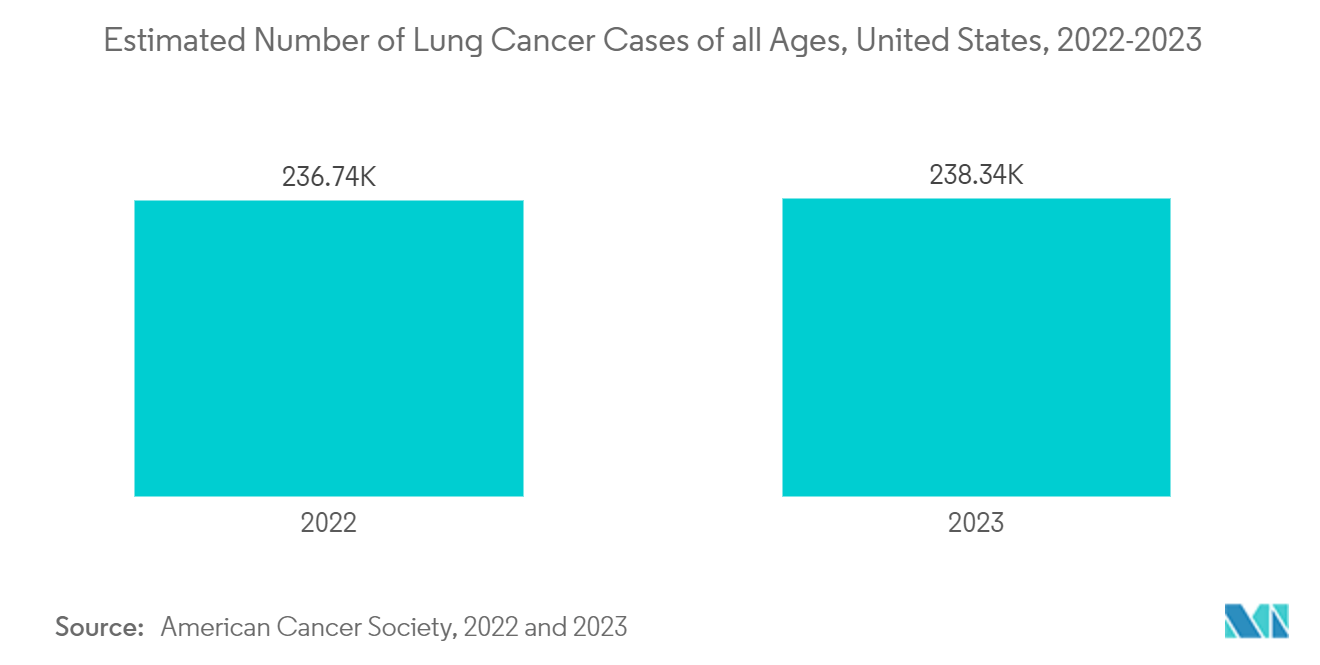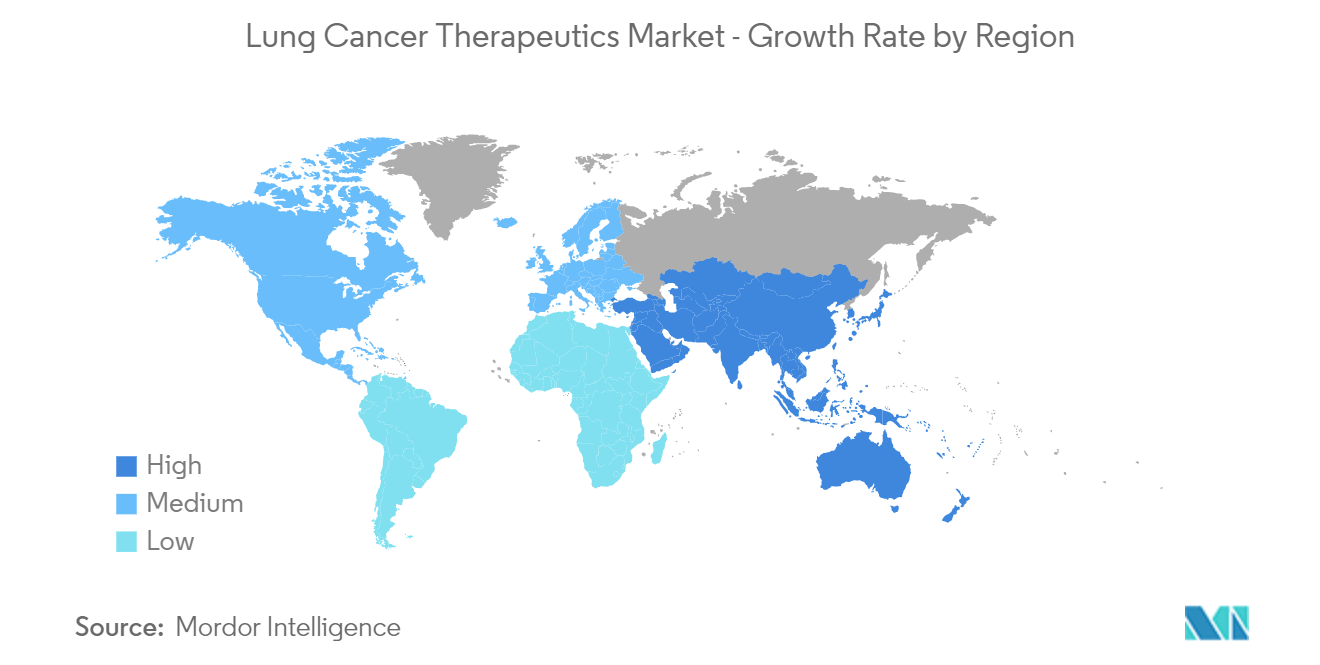Market Trends of Lung Cancer Therapeutics Industry
Non-small Cell Lung Cancer (NSCLC) is Expected to Hold a Significant Growth in the Market.
Non-small cell lung cancer is a group of lung cancers that behave similarly, such as squamous cell carcinoma and adenocarcinoma. NSCLC is the more common of the two types of lung cancer and hence this is expected to drive segmental growth. For instance, as per the article published by the Cancer Treatment Centers of America in January 2022, lung adenocarcinoma is the most common form of lung cancer, accounting for 30% of all cases overall and about 40% of all non-small cell lung cancer occurrences. As per the same source, squamous cell lung cancer accounts for about 30% of all non-small cell lung cancers and is commonly associated with smoking. In most cases of NSCLC, large-cell undifferentiated carcinoma accounts for 10% to 15% of all cases. Furthermore, according to the American Cancer Society's data updated in 2023, in general, about 80% to 85% of all lung cancers are NSCLC. Hence, this is likely to create demand for cancer therapeutics over the forecast period. Therefore, with a high prevalence of NSCLC compared to small cell lung cancer, the segmental market is expected to grow over the forecast period.
Furthermore, new product developments and launches by the key market players are also boosting segmental growth. For instance, in October 2021, United States FDA approved the immunotherapy drug atezlizumab (Tecentriq) as an additional treatment after surgery and chemotherapy for some patients with non-small cell lung cancer (NSCLC). The recent approval of drugs for the treatment of non-small cell lung cancer is likely to boost the growth of the market during the forecast period.
Hence, due to the above-mentioned factors, the segment is anticipated to witness growth during the forecast period.

North America is Expected to Hold a Significant Growth in the Lung Cancer Therapeutics Market
North American lung cancer therapeutics market is projected to have a significant market share due to the increasing number of people suffering from lung cancer coupled with the geriatric population. As per the American Cancer Society 2023 report, most people diagnosed with lung cancer are 65 years or older. The average age of people when diagnosed is about 70 years. Additionally, according to the CDC update in March 2022, cigarette smoking accounted for more than 480,000 deaths every year or about 1 in 5 deaths. Smoking damages nearly every organ and is associated with lung cancer. Thus, with an increase in people suffering from lung cancer caused due to smoking and an increase in the geriatric population, the demand for lung cancer therapeutics increases, thereby driving the growth of the market.
Furthermore, product approval in the United States also contributes to market growth. For instance, in May 2021, Amgen announced that the United States FDA had approved LUMAKRAS (sotorasib) for the treatment of adult patients with KRAS G12C-mutated locally advanced or metastatic non-small cell lung cancer, as determined by an FDA-approved test, who have received at least one prior systemic therapy.
As a result, all the aforementioned factors are likely to contribute to this region's strong growth over the forecast period.

